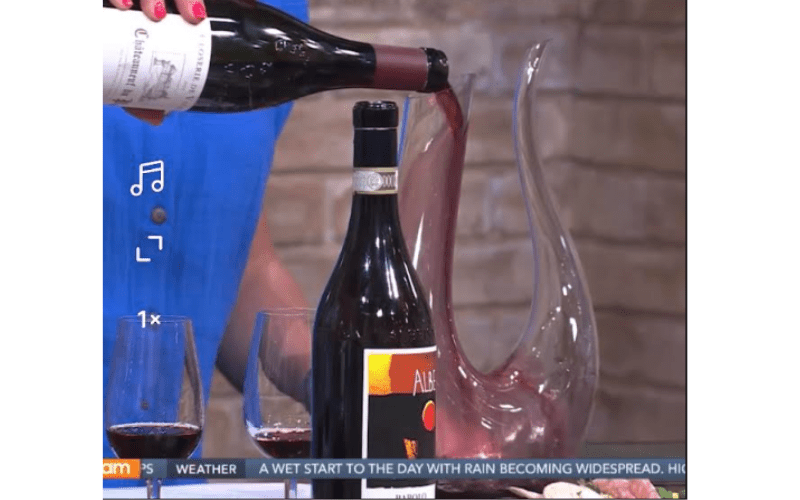Decanting wine is not only fun, it also helps the wine taste better. Whether you are wine guzzler or a self professed wine afionado, decanting a bottle is a great way to up the ante and make your bottle taste even better.
In my guide, we'll walk you through the steps to decant wine like a pro. I recently was on Ireland:am, where we did a live demo. The link to the video is below.
CLICK THE LINK TO WATCH THE VIDEO
Why Decant Wine? Have you ever heard the phrase ‘open it an hour before
dinner?’, or ‘this wine needs to breathe’, that is effectively saying that a wine
needs to be decanted, that exposing it to air will mean that the flavours will
become magnified and intense.
The 2 key reasons why decanting a wine is essential:
1. Aeration: Decanting allows the wine to breathe, exposing the wine to oxygen, and releasing its aromas and flavours.
2. Sediment Removal: Older wines often have sediment at the bottom of the bottle, whilst drinking it won’t make you sick, it does feel like drinking sand. Decanting helps separate the wine from the sediment.

Step-by-Step Guide to Decanting Wine
1. Choose the Right Wine to Decant: Not all wines need decanting. Generally, red wines and older wines benefit the most from decanting, but young, tannic wines also improve with aeration. For me, any wine over €15 will benefit from ‘breathing’.
2. Prepare Your Tools You'll need:
- A bottle of wine
- A clean decanter or jug
- A corkscrew
- A wine glass
3. Let the Bottle Stand: If your wine is mature and has been stored horizontally for 6 months or more, stand it upright for at least 24 hours before decanting. This allows the sediment to settle at the bottom.
4. Open the Bottle: Carefully remove the cork using a corkscrew. If the wine is a mature wine that has been stored for a long time, be gentle to avoid disturbing any sediment.
5. Pour the Wine
If the wine is a young wine, don’t be gentle, it will benefit from a fast and aggressive decant in to the bottle. If the wine is a mature one, slowly pour the wine into the decanter in one steady stream. Hold the bottle at a slight angle (45 degrees is perfect). Keep your eye on the neck of the bottle, you will be able to see the sediment gathering. The most important thong here is to stop pouring once any sediment slips through into the decanter.

6. Let the Wine Breathe. Allow the wine to sit in the decanter. The amount of time depends on the wine:
- Young Reds: 1-2 hours
- Older Reds: 30 minutes to 1 hour
- Full-Bodied Whites: 30 minutes
7. Serve and Enjoy. Pour the decanted wine into your wine glass and enjoy the enhanced flavours and aromas.
Tips for Decanting Wine:
- Use a Wide-Bottomed Decanter: This increases the surface area, allowing more oxygen to interact with the wine.
- Don't Over-Decant: Some wines, especially older ones, can lose their character if left to breathe too long. Decant just before you want to drink it.
- Practice Makes Perfect: The more you decant, the better you'll get at identifying the optimal breathing time for different wines.

Common Mistakes to Avoid
- Shaking the Bottle: This can mix the sediment back into the wine.
- Rushing the Process: Give the wine ample time to breathe.
- Ignoring White Wines: Some full-bodied white wines also benefit from decanting.
Conclusion
Decanting wine is a simple yet effective way to magnify and enhance your wine-drinking
experience. Don’t be afraid of decanting and don’t restrict it to just premium wines. Any red
wine over €15 or white wine will taste even better when decant them.




0 comments